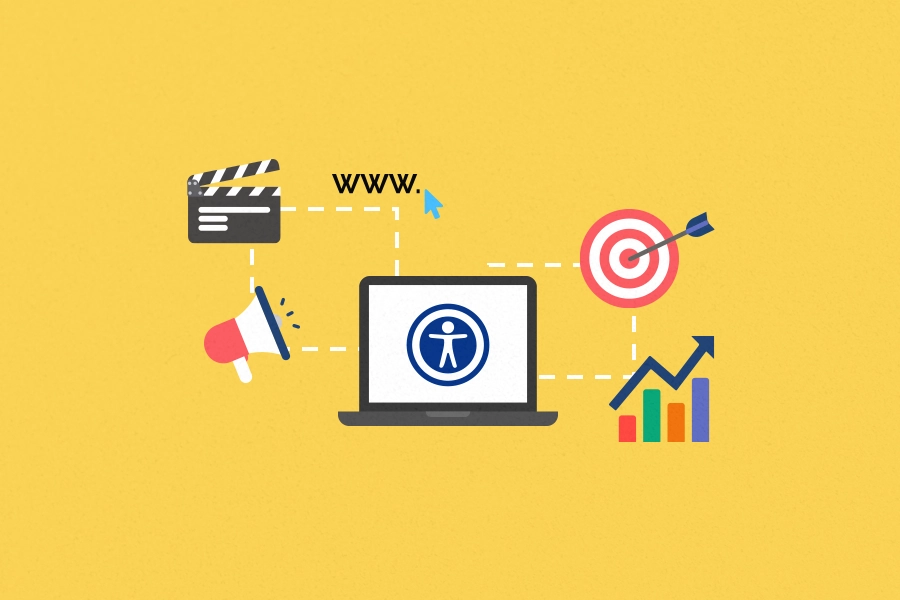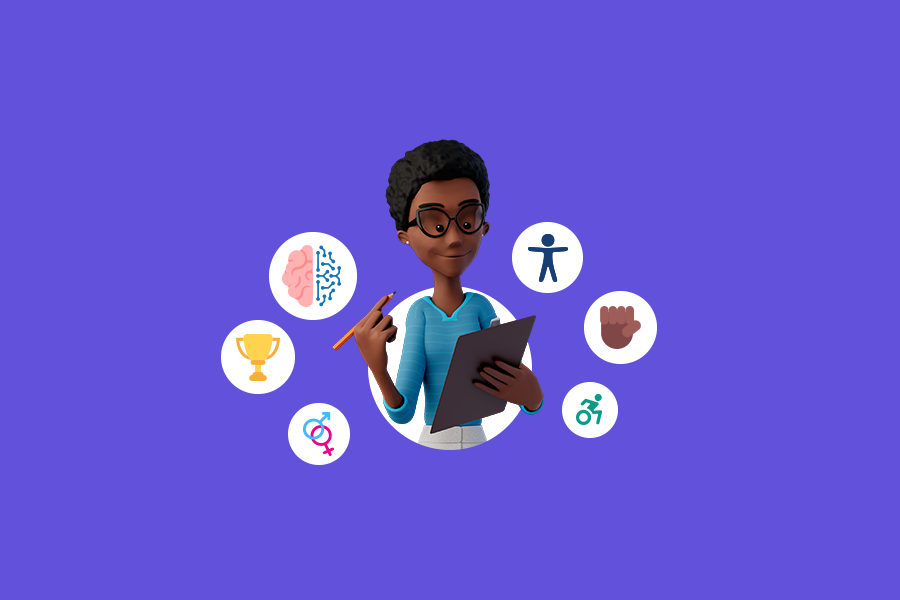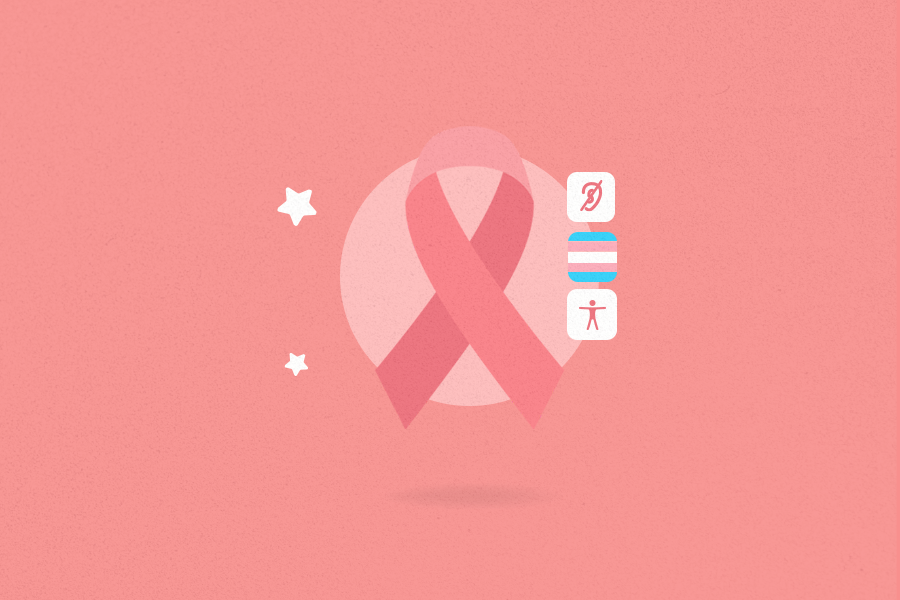
Diversity and Inclusion: what is it and what is the difference between them?

Much is said about “diversity and inclusion”, also known as “D&I”, but there are still some questions that permeate the minds of most people. That’s why we are here to help you understand everything you need to know about this universe! Shall we?
What is the difference between diversity and inclusion?
To start talking about this concept, it is important to understand the difference between the terms “diversity” and “inclusion”.
What is diversity?
The word “diversity” refers to everything that is different, diverse, plural. It is about the biological, ethnic and linguistic diversity. It encompasses all people, but when we talk about the concept of D&I, it is referring to people who represent the groups that were not prioritized by society.
Diversity is still judged by many people as something bad, as if they are afraid of the new, of what is different from themselves. But in fact, it should be valued, because it is through those differences that we manage to grow, learn and innovate.
What is the concept of inclusion?
While diversity refers to different social groups, the concept of “inclusion” refers to including these people in society in an equitable way. It aims to ensure that they are represented in all areas, occupying spaces of power, in educational institutions and work opportunities, and still having all their rights respected.
This happens through the development of awareness actions, sharing information and including different people in your social cycle and work team, among other initiatives that break down the attitudinal barriers that are still excluding a large part of the population.
What are the main diversity groups?
For a better comprehension, when we think of diversity groups, there are some categories:
- Ethnicity: this group includes people of different races and cultures, such as black people, immigrants, etc.
- Gender: all people who identify as female and transgender people.
- Age: people of different ages, especially those over 50 years old, who are often excluded from the job market.
- Sexual Orientation: People who identify as gay, bisexual, queer, pansexual, intersex, and asexual.
- People with disabilities: people with physical and/or motor disabilities, people with intellectual disabilities, people with sensory disabilities, among other disabilities.
What does the lack of diversity cause?
The lack of diversity in companies, schools, in leadership positions, or in any other space, triggers a series of problems and conflicts related to the violation of these people’s rights, which even harm human rights.
This occurs because without representativeness of these groups, that structure will be represented by the same ideas, which do not reach what is “outside the box”. As we mentioned earlier, many people are afraid of what is different from themselves, afraid of thinking beyond what they are used to living and experiencing. This can make them resistant or aggressive, provoking attitudes such as:
Ableism
This is the prejudice against people with disabilities. It is the judgment of a person’s ability by their disability. This can happen both verbally, by disrespecting a person with a disability, or even when they are excluded from the job market, or do not find the necessary accessibility tools to perform their functions.
Audism is a good example. It happens when hearing people doubt the ability of deaf people to carry out daily activities, or even when they do not offer the necessary accessibility resources for them, such as subtitles or Sign Language interpreters.
Racism
Racism is when a person or a community discriminates against people that belong to a different racial and ethnic group, typically excluded by many. This is structural in society and who suffers most from it are black people and immigrants, who represent a large part of the population of the USA.
Homophobia
Homophobia is the discrimination against people from the LGBTQIA+ community. It is a series of negative and discriminatory attitudes and feelings towards them. This even oftenly reflects in the job market, when they are not hired because of mistaken “prejudgments” about them. Or even when they suffer these attacks in teaching or work environments.
Male chauvinism
This is an attitude, or a set of attitudes, that rejects the lack of equality, social conditions and rights between men and women. It is still structurally present in society, in deep beliefs that come from a long long time ago. For example, the belief that men are stronger and have more power than women, or that they should have the final word (and therefore should occupy leadership positions), or that they are providers and should support their families, among many other examples.
How important is diversity and inclusion?
It is important for diversity and inclusion to be worked on in society, in schools, in the workplace, etc., as it opens up space for new ideas, new perceptions of the world, generating creative and innovative solutions. Some expected positive results are:
Social welfare
People who belong to a diversity group should be included in society and given the same opportunities equally. Inclusion promotes well-being, because by doing so, we reduce the situation of social vulnerability of these people, which unfortunately is still the case for many of them.
In addition, the more we work on diversity and inclusion in all spaces, including the communication channels, the more we manage to make people aware of the importance of respecting differences. This puts us in a virtuous cycle, but there still is a lot to improve!
Engagement
With the advancement of social networks, we have been able to disseminate more knowledge and information, and even report cases of discrimination more easily. Now, we can see that more and more people are engaging with social causes of inclusion.
This engagement is fundamental for us to end discrimination, as people have been able to do the exercise of looking inside themselves and observing their judgments, which were often unconscious, and still look at the people around them and notice the same. This provides an opportunity for self-improvement and to alert others if they are repeating mistaken speeches or other patterns.
Positive feedback for the company
This aspect is divided into a few different points, because the company really only has to gain by betting on diversity and inclusion!
First, a company made up of diverse people tends to think of more creative and innovative ideas to solve problems or generate new opportunities. This happens because there are minds with different stories and perspectives thinking about the same subject, so the results also tend to be broader and “out of the box”.
Second, a brand that positions itself in the market as diverse and inclusive is able to communicate better and with more people, covering different audiences. Furthermore, a survey carried out by Accenture shows that 62% of people prefer to buy from companies that care about social issues, while 47% prefer not to buy from companies that disappoint them with their stance on the same issues.
Turnover reduction
The “turnover reduction” means that the rate of collaborators asking to leave the company decreases. D&I relates to this aspect, as a diverse and inclusive company tends to have a happier and healthier work environment. People usually feel more welcomed and have space to report if they are disrespected by other people on the team. Welcoming and safe corporate environments are highly valued by the team, thus reducing the chance of voluntary layoffs.
How to promote diversity and inclusion?
There are a few ways to promote diversity and inclusion in your business, such as:
Creating a Diversity Committee
Creating a Diversity Committee is a key tool for all companies. Many still believe that this is only possible in big businesses, but the truth is that it is possible to start with the current team, be it of any size, as long as you assemble a team focused on looking at D&I goals.
The committee should be made up of diverse people with the aim of increasing diversity within the organization and creating a safe and welcoming space for them. The group must also promote awareness dynamics on diversity and inclusion for the entire company.
Creating appreciation and welcoming policies
Creating policies to value diversity and acceptance is fundamental for the growth of D&I in the company. We still need to make people aware of the importance of diversity, so we need to get the whole team on the same page, right?
It is also ideal to have a diversity goal within the team, set a goal for hiring diverse people, apply diversity and inclusion dynamics so that the whole team participates and works on their limiting beliefs or unconscious prejudices that may exist.
By doing so, people in the diversity group will feel valued and welcomed. In addition to feeling safe to make complaints if necessary.
Integrating teams
This topic is part of the mission of a Diversity Committee, for example. But if your business still doesn’t have one of these and forming one is not a priority at the moment, it is still possible to develop integration dynamics between teams.
There are several ways to develop group activities that encourage integration between teams, making them know more about the story, struggles and achievements of each one. Generating opportunities to deconstruct beliefs and prejudices that may exist.
Prioritizing respect
A basic premise for promoting diversity and inclusion is to prioritize respect! For example, when carrying out some of the integration dynamics, some people may come across prejudiced thoughts, negative and even discriminatory judgments. After all, the objective of these dynamics is the deconstruction of these ideas. But, it is important to remember that it is not because we have these thoughts in mind, that we have the right to externalize them, offending and hurting other people.
If you notice that a prejudiced thought has crossed your mind, just observe it and decide that you no longer need to believe it. Realize that even though you thought this way for many years, it does not make sense to think like this anymore.
If you notice that your team has been disrespectful, intervene immediately, always prioritizing the respect and comfort of all people.
Promoting equity
Ensuring equity is a D&I key! Equity differs from equality, as it is when we offer the necessary resources, considering the diversity among people, so that they are included in that environment.
For example, equality would be offering the same job opportunity to a deaf person and a hearing person. Equity, on the other hand, is when we offer the same opportunity, but also provide the necessary accessibility tools so that the deaf person can perform the function with autonomy and comfort. This same logic can be applied to other aspects of diversity.
How to talk about diversity and inclusion?
To talk about diversity and inclusion, the first step is to think about representativeness and the position to speak. For example, we can’t ask a person without a disability to represent the struggle of a person with a disability in a speech, right? Just as it would not make sense for a white person to represent the challenges that a black person faces in the job market.
It is possible, and even necessary, that all people engage and be spokespersons for agendas related to social inclusion, but always respecting their place of speech!
What are the challenges of diversity and inclusion?
Some of the biggest diversity and inclusion challenges are:
Team acceptance and respect
Promoting diversity and inclusion in the team is a process. Many people are still resistant to the subject, or do not see its due value. This means that they do not engage in activities promoted by the company, or even reproduce patterns of disrespect towards other people.
Leadership acceptance and respect
Worse than collaborators disengaged with D&I, are the management people playing this role. That is because they are the role model, or an example for others. It is essential that leadership is engaged with the company’s demands for diversity and inclusion, as this will encourage the rest of the team to do the same. In addition, it is management that has the greatest influence on team selection and can hire more diverse people to compose it.
Acts of discrimination
As we mentioned earlier, prejudiced thoughts are rooted in society’s minds and we are still far from an ideal scenario where we no longer see acts of discrimination happening.
Overcoming discrimination in society is like an ant’s work and everyone is responsible for doing their part. This should start with each one of us, but companies are also largely responsible for promoting the awareness of their team and not tolerating discriminatory acts permeating it.
Lack of information
It is still a challenge to fight the lack of information about the differences between people. It is only through knowledge that we will be able to overcome the ignorance of society. The communication channels and social networks have been gaining a lot of strength, and becoming great allies in this fight against misinformation.
Therefore, the positive impacts of the dissemination of information on these subjects in society are already perceptible, but we still have a long way to go.
Not prepared Human Resources area
Many companies still do not have a human resources area properly prepared to implement D&I strategies. Here it is also included the aspect of lack of information. It may be that the company has not yet realized the importance of this agenda and how it can only benefit from it.
If your business’s HR has not yet started to prioritize these actions, it is up to the management or board to offer diversity and inclusion training for the area.
Conclusion
Well, if you are following this content, you have certainly understood that the diversity and inclusion agenda is urgent for companies. With this in mind, your brand can gain both in results with the team and with your external audience, reaching and retaining more customers!
This is a subject that is on the rise this year and will grow even more. So it is worth staying on top of D&I trends and starting putting them into practice right now!We know it might seem daunting at first, but the truth is, there are many simple ways to promote diversity in your company. We are here to support you on this journey, count on our blog, ebooks and products! Let’s work together to build a fairer world.


